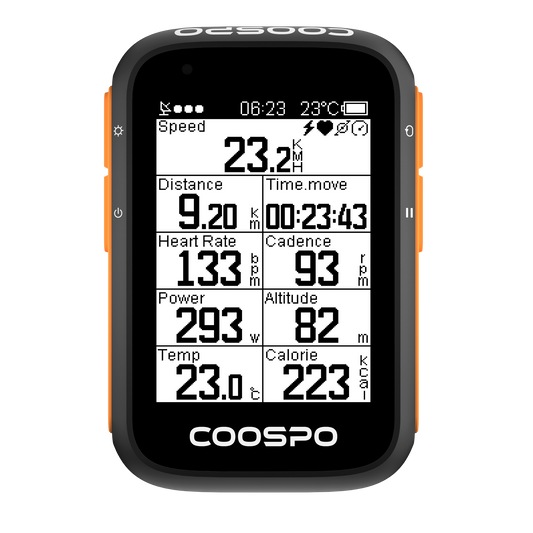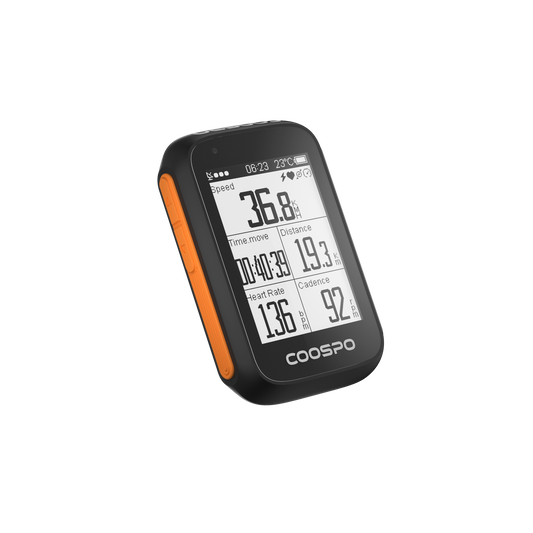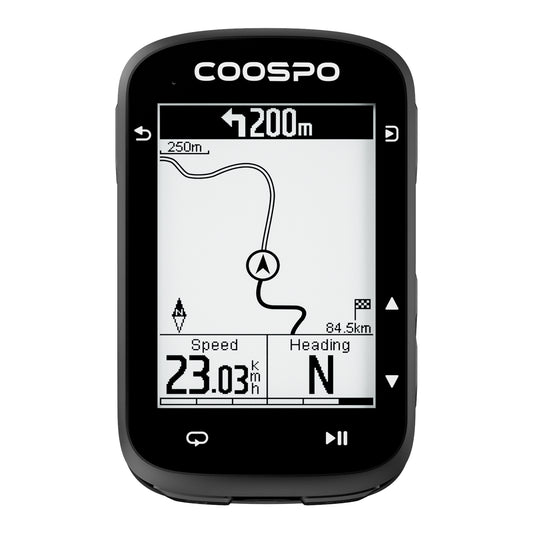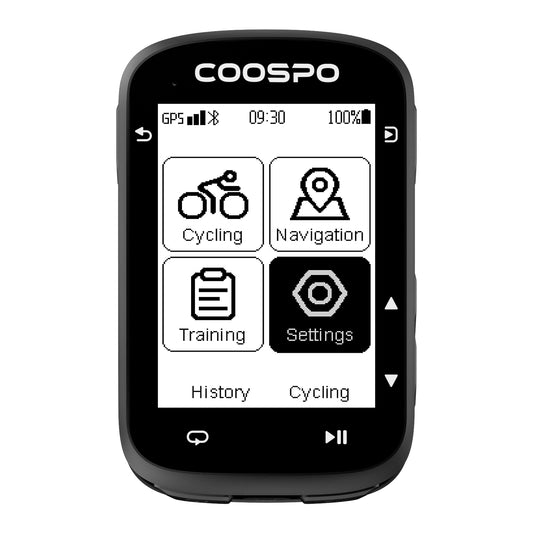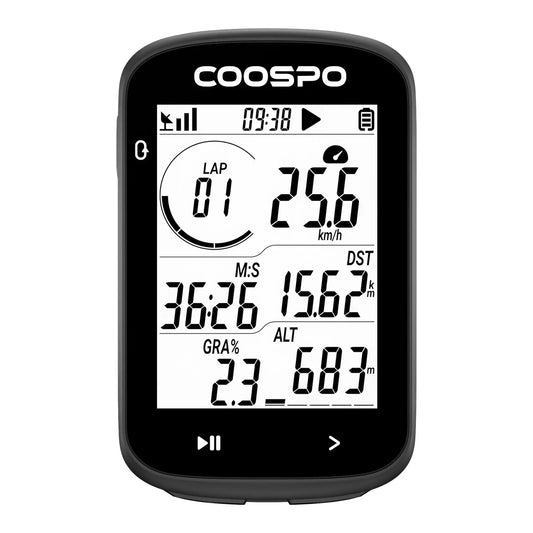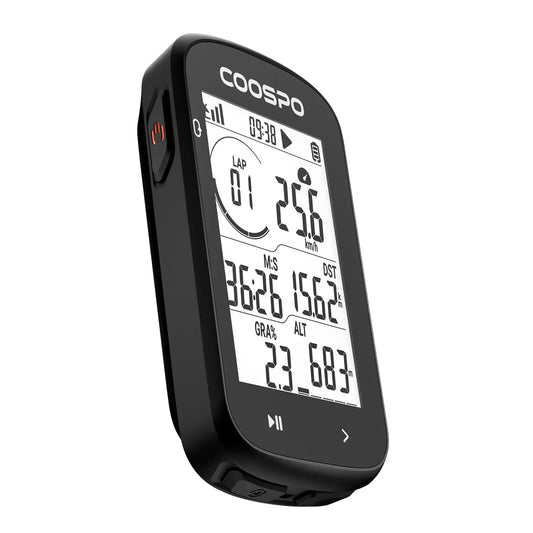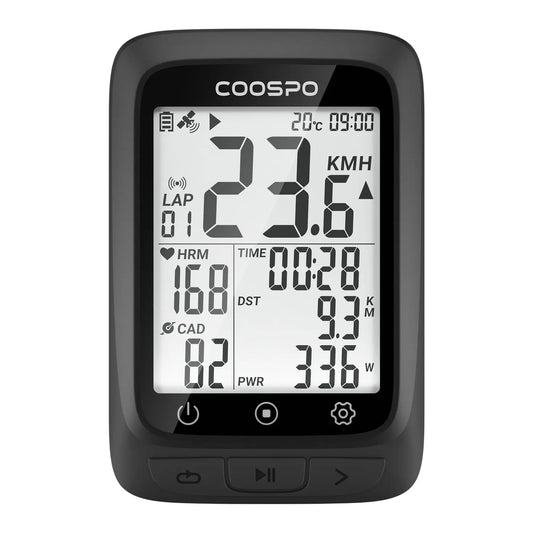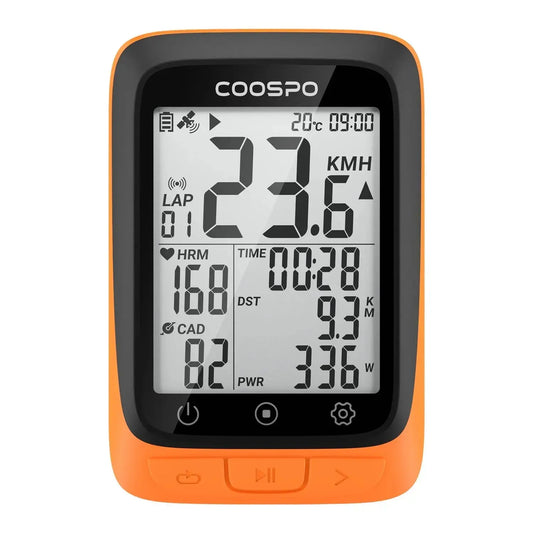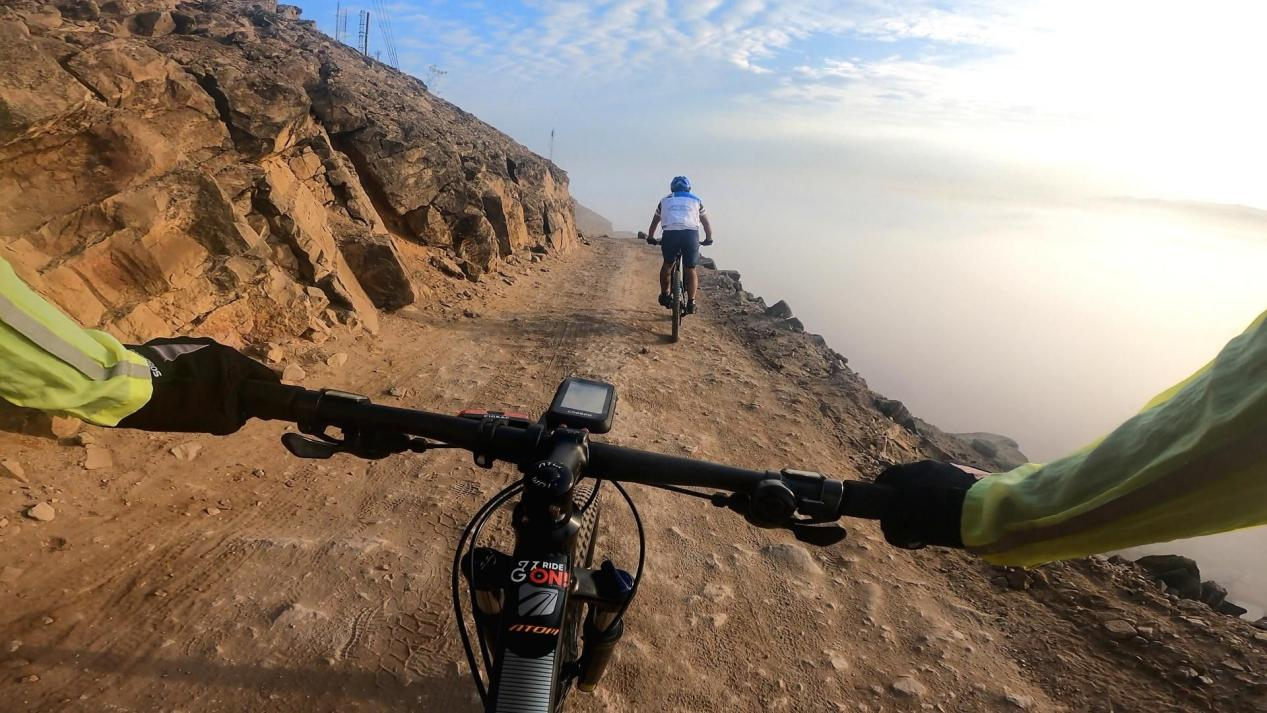Les métriques de cyclisme importantes que vous devriez connaître
Vous vous sentez souvent dépassé par la quantité de données que vous rencontrez lorsque vous faites du vélo ? Ce guide est là pour vous sauver en vous proposant une compilation détaillée et complète des chiffres essentiels que vous devriez surveiller pendant vos aventures à vélo. De la distance parcourue à la vitesse moyenne en passant par la fréquence cardiaque et la dépense calorique, cette liste complète vous permettra de disposer de toutes les informations nécessaires pour surveiller et améliorer vos performances à vélo.

Il ne fait aucun doute qu’avoir des objectifs mesurables et une formation quantifiable permet de rester plus facilement au top de votre entraînement et d’être plus productif.
Le suivi des mesures de cyclisme nécessite généralement un appareil pour capturer les données. Ordinateurs de vélo GPS comme Coospo fournissent la plupart des mesures, notamment la vitesse, la distance, le temps et l'altitude. Si vous souhaitez approfondir les données, des capteurs supplémentaires tels que moniteur de fréquence cardiaque et capteur de cyclisme peut être nécessaire.
Vitesse de cyclisme / Vitesse moyenne
La joie de voir votre vitesse s'améliorer
Les kilomètres par heure (ou miles par heure) sont une mesure de suivi intéressante qui peut montrer une amélioration significative de la condition physique. Cependant, elle n'est pas très fiable pour l'entraînement en raison des nombreux facteurs qui peuvent l'influencer.
Votre vitesse moyenne est un indicateur de progression de l'entraînement. Par exemple, si vous aviez auparavant une moyenne de 24 km/h et que vous atteignez maintenant régulièrement une moyenne de 25 km/h ou plus sur le circuit, cela montre que vous êtes en meilleure forme et plus rapide.
Distance
Regardez votre endurance augmenter
Nous aimons tous voir nos progrès, surtout lors de longues sorties. Le suivi de la distance parcourue est une mesure motivante.
Si vous roulez habituellement entre 80 et 130 kilomètres par semaine, pouvez-vous vous forcer à atteindre 160 kilomètres ? Est-il possible de se fixer un objectif annuel ou plus ?
Lorsque vous mesurez la distance, il est essentiel de prendre en compte le type de trajet que vous effectuez. Parcourir 95 kilomètres sur une autoroute plate est très différent de parcourir 95 kilomètres sur une rue à sens unique. Le premier peut prendre trois à quatre heures, tandis que le second peut prendre une journée entière.
Temps
Apprendre à gérer le rythme des événements
La plupart des cyclistes organisent leur entraînement en fonction du temps dont ils disposent, car le temps est leur ressource la plus limitée.
Si votre objectif est d’améliorer vos performances, le nombre d’heures que vous passez à faire du vélo chaque semaine déterminera la manière la plus efficace d’utiliser ce temps.
Les cyclistes qui ont peu de temps bénéficient d’un entraînement bipolaire, qui consiste en des intervalles courts et intenses pendant la semaine et des sorties plus longues le week-end, lorsque plus de temps est disponible.
Le Ordinateur de vélo Coospo peut suivre automatiquement à la fois le temps passé en mouvement et le temps passé à l'arrêt via l'application CoospoRide.
Élévation
Développer sa force
En cyclisme, la dénivellation correspond au nombre total de mètres (ou de pieds) que vous parcourez pendant une sortie. L'escalade est un excellent exercice car elle oblige votre corps à travailler plus dur pour surmonter la gravité.
Si vous évitez habituellement les collines lorsque vous roulez, vous fixer des objectifs d'ascension et suivre le dénivelé que vous parcourez peut améliorer votre condition physique à vélo.
Si vous souhaitez suivre votre progression, vous pouvez gagner 1 000 pieds verticaux tous les 10 miles parcourus. Pour vous motiver, vous pouvez également participer au défi d'escalade mensuel de Strava.
Calories
Une calorie est une unité d'énergie fournie par les aliments. L'indicateur de calories sur votre compteur de vélo ou votre montre connectée indique le nombre de calories que vous avez brûlées pendant votre trajet.
Il est toutefois important de noter que cet indicateur n'est qu'une estimation. Certains appareils utilisent des algorithmes pour fournir cette estimation, mais elle peut ne pas être totalement précise.
Les applications d’exercice et d’entraînement peuvent fournir des estimations légèrement plus précises, mais leur précision dépend des informations que vous fournissez à l’application.
Pour un décompte plus précis des calories, vous pouvez porter un moniteur de fréquence cardiaque avec sangle thoracique qui est synchronisé avec votre ordinateur de vélo ou autre appareil.
Vous remarquerez peut-être aussi que plus vous êtes en forme, moins vous brûlez de calories lors d'une sortie à un rythme donné. C'est parce que votre corps utilise l'oxygène plus efficacement.
Cadence
Entraînement force des jambes et la vitesse
Pour mesurer la cadence, vous aurez besoin d'un ordinateur de vélo et un capteur de cadence.

La cadence fait référence au nombre de tours par minute pendant le pédalage. Avec un capteur de cadence, vous pouvez surveiller votre cadence en temps réel sur votre ordinateur de vélo et suivre la cadence moyenne de chaque sortie.
Même si vous n'avez pas besoin de suivre votre cadence à chaque sortie, un capteur de cadence peut être utile pour les exercices de cadence. Ces exercices comprennent des entraînements à faible vitesse/cadence élevée et à vitesse élevée/faible cadence, qui peuvent améliorer la forme cardiovasculaire, la vitesse et la force des jambes.
Fréquence cardiaque
Personnaliser les zones d'entraînement et prendre en compte les niveaux d'énergie et la fatigue
À mesure que vous faites plus d'exercice, votre cœur pompe davantage d'oxygène et de sang riche en nutriments pour alimenter vos muscles, ce qui entraîne une augmentation de votre rythme cardiaque. La surveillance de votre rythme cardiaque à l'aide d'un moniteur de fréquence cardiaque peut fournir des informations précieuses sur l'intensité de votre exercice.
Pour utiliser votre fréquence cardiaque efficacement, vous devez d'abord déterminer votre fréquence cardiaque maximale (FCM), qui correspond au nombre maximal de battements par minute que vous pouvez atteindre. Vous trouverez des conseils sur la façon de mesurer votre fréquence cardiaque maximale dans cet article :
https://www.coospo.com/blogs/knowledge/what-are-the-five-heart-rate-zones
Certaines études ont montré que les montres connectées et les bracelets peuvent être moins précis pour les cyclistes. Pour une surveillance précise de la fréquence cardiaque, il est recommandé d'utiliser un cardiofréquencemètre à ceinture thoracique ou un cardiofréquencemètre à brassard.
Puissance (Watts)
La mesure la plus précise de vos efforts
La puissance est la quantité de travail que vous effectuez dans un laps de temps donné. En cyclisme, votre cadence de travail est mesurée en watts, ce qui indique la quantité d'énergie que vous produisez. Le fait de pouvoir générer plus de puissance pour votre taille vous aide à rouler plus vite. L'utilisation d'un capteur de puissance vous permet de voir immédiatement l'intensité de votre effort.
Bien que la puissance soit plus précise que la fréquence cardiaque, il est utile de prendre en compte les deux. La fréquence cardiaque reflète la façon dont votre corps réagit au travail que vous effectuez. Votre fréquence cardiaque doit augmenter et diminuer en synchronisation avec votre puissance.
Cette compilation complète vous sera utile pour suivre et améliorer vos performances à vélo. N'oubliez pas de toujours rester en sécurité et de profiter de vos aventures à vélo !



